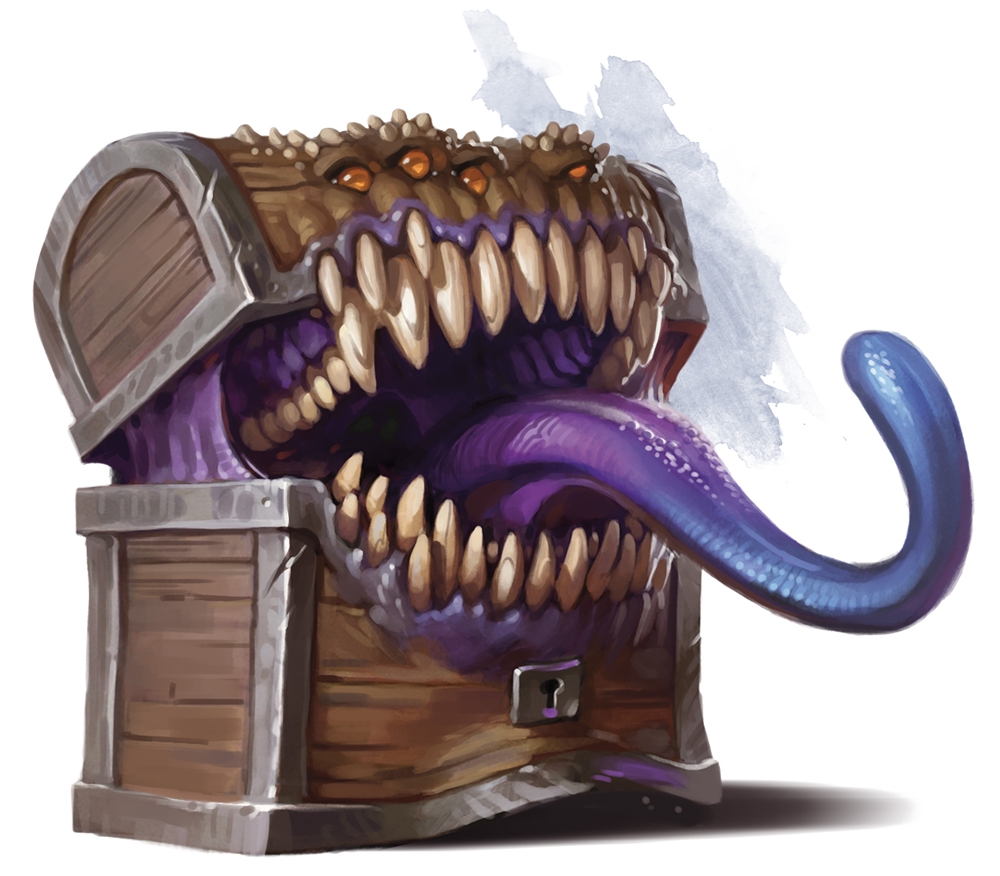The thief stealthily hides in the shadows and moves silently into the room. There are no monsters. There are no guards visible. There is but a single treasure chest in the center of the floor. The thief closely looks at the ground around the chest. He checks out the walls looking for aberrations. He looks for loose stones in the floor. Finally he is positive that there are no traps around the chest.
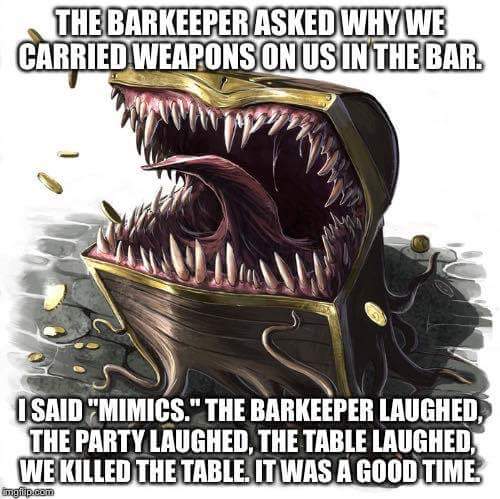
He creeps towards the chest knife in mouth. When he gets close he carefully inspects the outside of the chest itself. There are no wires visible. There are no obvious signs of traps He carefully inspects the locks for poison needles. And then he pulls out his tools and begins to work the locks. And finds himself stuck fast to the chest. The chest is not a chest. The chest itself is the trap. For it is not a chest at all…..but a mimic in disguise.
The mimic is a classic staple of Dungeons and Dragons. But the game did not start with mimics in it.

The history of the mimic in Dungeons and Dragons
No. The mimic was not an original monster in Dungeons and Dragons. In fact it was first introduced into the game with the 1977 Monster Manual for 1st Edition Advanced Dungeons and Dragons. This is kind of surprising isn’t it? For this seems like such a basic creature now after so many years. Of course….just about every edition since that time has included it.
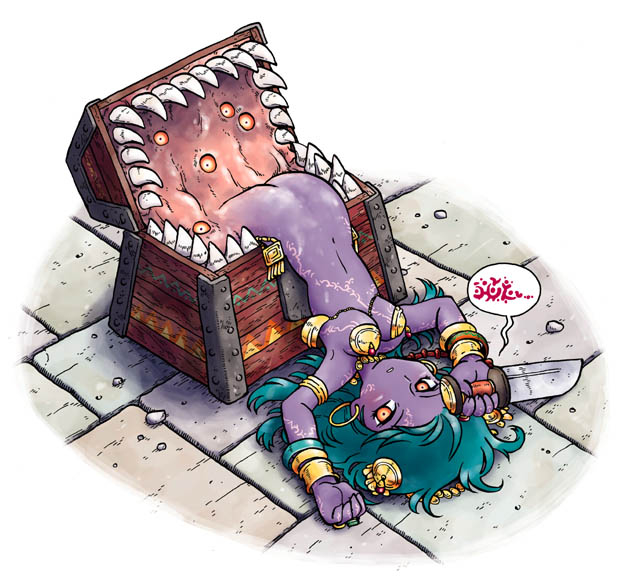
Versions of the mimic in Dungeons and Dragons
At first there were but two. These were the “mimic” and the “killer mimic.” The smaller version of the mimic is more friendly. They are intelligent. And generally they only want food. If given some they will often be quite cooperative with the dungeon delvers that encounter them. The other, however, is a more violent and aggressive species. These are the killer mimics. They are often stronger and more powerful than normal mimics. And far more dangerous. The killer mimics are far less intelligent. They can not even speak.
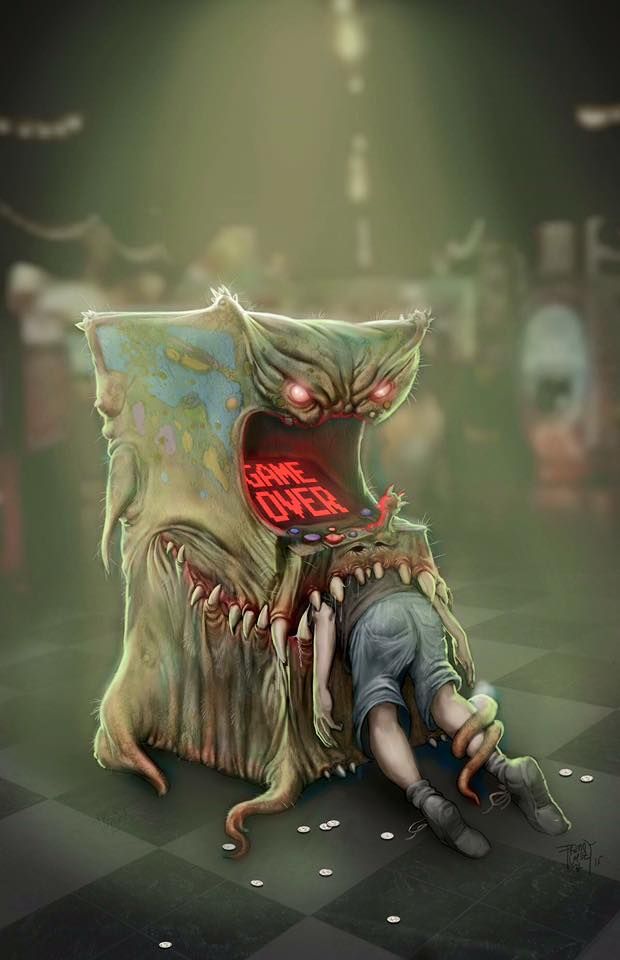
Dragon magazine issue 101 introduced a new type of mimic known as the Metal Mimic. These are able to imitate metal rather than just stone or wood like normal mimics. They even have the ability to have a single pseudopod imitate an enchanted weapon in order to lure prey towards itself. The metal mimic also comes in two forms. A larger normal version which is intelligent and often friendly. And a smaller “killer” version.
Dungeon issue 19 offered another much larger version of the mimic called a “house hunter.” These large mimics imitate small buildings and houses in order to lure prey inside of them. They could even imitate a temple or small inn.
Second edition offers us the “Space Mimic” for Spelljammer. The space mimic pretends to be floating space debris. The Forgotten Realms box set for this edition also offers the “Greater Mimic” which is an enhanced version of the creature.
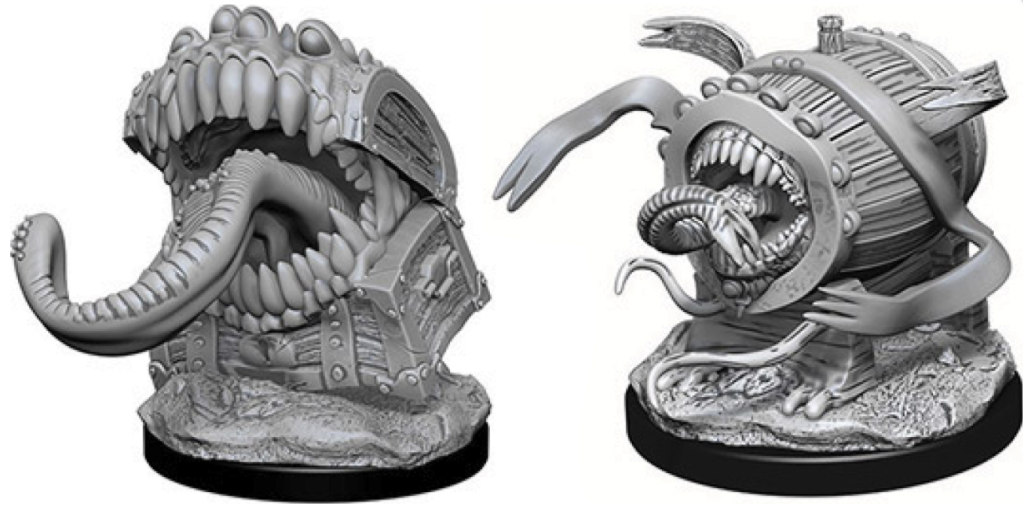
The Mimic in Dungeons and Dragons is a subterranean creature
The First Edition Monster Manual tells us that the mimic cannot stand light. They prefer underground places in which to live and seek food. These creatures can perfectly mimic both stone and wood. When creatures come along and touch the surface of the mimic they are held fast by a glue like substance. This gives the creature the advantages of both surprise and control of at least one hand or appendage of the potential victim.
The mimic can alter its form and it’s pigmentation. This allows it to lure prey towards it.They often appear in the form of treasure chests but there are many other forms in which the mimic might appear. This article will discuss this aspect of the mimic in greater depth later in this article.
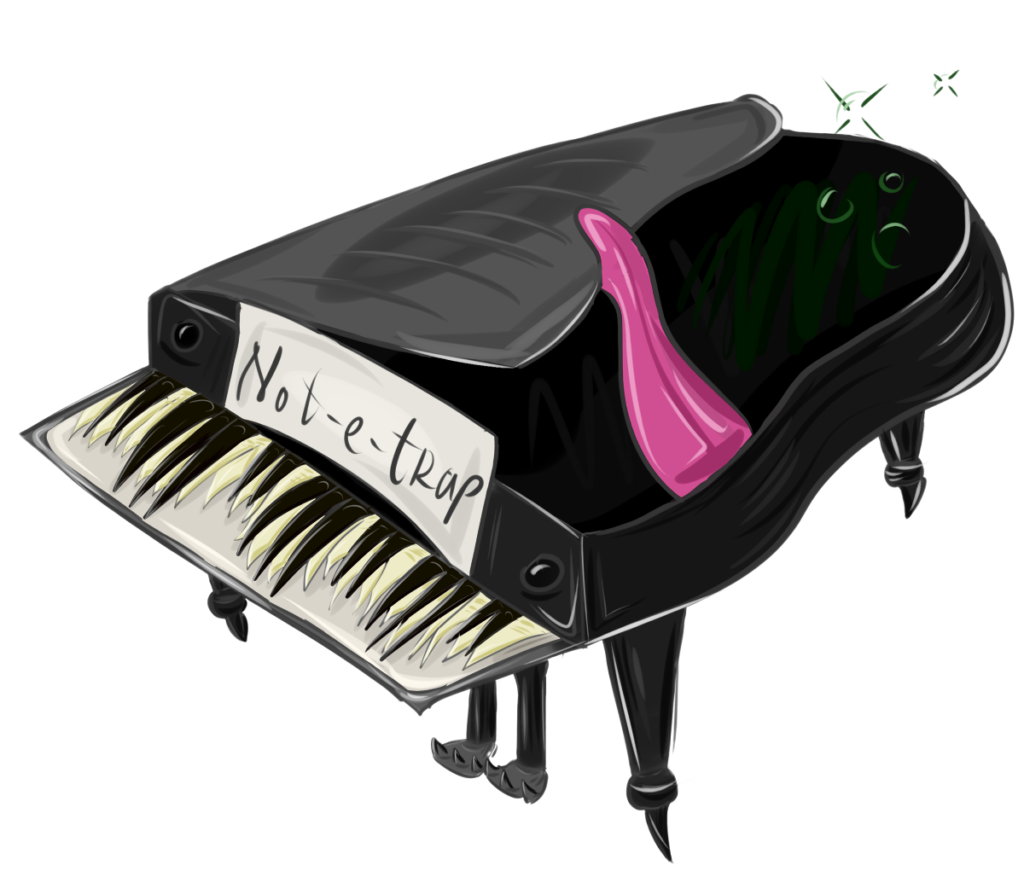
Communication with mimics in Dungeons and Dragons
The mimic is able to communicate in it’s own tongue as well as the common tongue and other languages. Killer mimics cannot speak at all. In 5th Edition the mimic can sometimes speak undercommon as well as common.
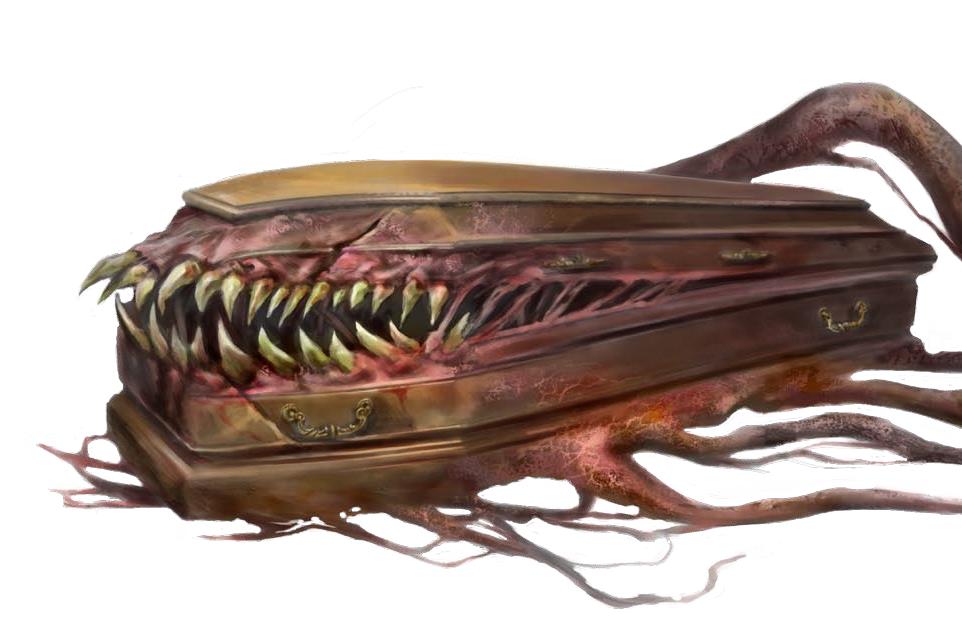
Possible forms that one might encounter a mimic in Dungeons and Dragons
The possibilities of what form a mimic might be encountered in are nearly endless. With the ability to imitate wood and stone there are tons of possibilities. If you add in the metal mimic variation there are many more possibilities to consider. This is the real key to using a mimic effectively and in an interesting way. Players often suspect treasure chests to be a mimic. But will they expect the wooden floor to be one? Or a stone wall?
Some possibilities that come to my mind for using a mimic creatively are:
- Treasure chest is of course the first option
- Doors
- Chairs
- Tables
- Thrones
- Book Cases
- Pedestals
- Walls
- Floors
- Ceilings
- Chandeliers
- Paintings
- Desks
- Cabinets
- Statues
- Stairs and Staircases
- Archways
- Altars
- Fonts
- Any furniture of any type
- Large musical instruments like harps
- Overhangs
- Balconies
- A large book
- Caskets
- Coffins
- Kegs
- Barrels
- As an obvious trap (but not so obviously a creature instead) (this might lead a thief to try to disarm the trap and be stuck to the mimic instead)
- Cupboard
- Dresser
- Box
- Toilet
- Shield
- Bar
- Barstool
- Clock
- Ladder
- Sarcophagus
- Crypt
- Fountain
- Piano
- Organ
- Boat
- Tree stump
- Cart
- Gate
- Urn
- Vase
- Fireplace
- Bed
- Workbench
- Loom
- Lectern
- Screen
- Pews
- Wheel
- Siege equipment
- Racks and other wooden torture devices
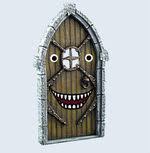
Some possibilities for the metal mimic might include:
- Anvil
- Metal statues
- Brazier/fire pit
- Metal door
- Magical swords (as a single psuedopod bait)
- As a suit of standing armor
- As a pile of coins
- Portcullis
- Metal Gate
- Chimes
- Gong
- Cage
- Iron Maiden
Of course…there are many possibilities that I have not yet considered. Creativity could lead to a very interesting and fun encounter for your dungeon delvers. Using a mimic in a totally unexpected way might easily create an encounter long remembered in your campaign.
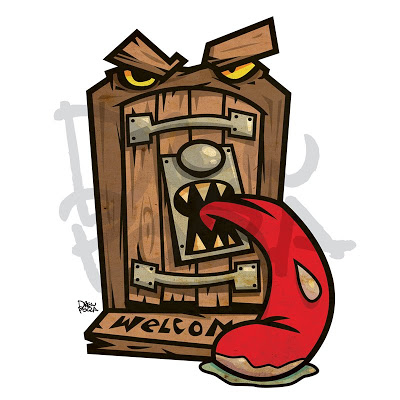
The origins of mimics in Dungeons and Dragons
It is said that the mimic is the result of experimentation by insane wizards that wanted to create a special kind of servant for their arcane purposes. But it was quickly discovered that these intelligent creatures were not willing servants. And they were quickly discarded by these wizards. But this is, of course, speculation. No one knows for sure where the mimic came from. Perhaps some ancient sage might believe that he has the answer. Perhaps some oracle might disclose the truth. But then again…perhaps not.
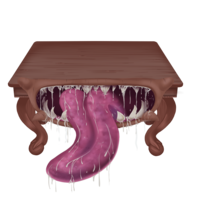
The key to using the mimic effectively is to achieve total surprise
Total surprise using a mimic requires placing it somewhere that your adventurers clearly do not expect to find one. On the first steps in a dungeon perhaps. Or on the door exiting the dungeon instead. As a statue in the middle of a busy street in the city. Or as the king’s own throne! An assassin would never use the same disguise twice. And a Dungeon Master should follow the same advice. Use mimics differently each time that they are encountered in your games. Total surprise will just about always be achieved when you are creative in your use of the mimic.
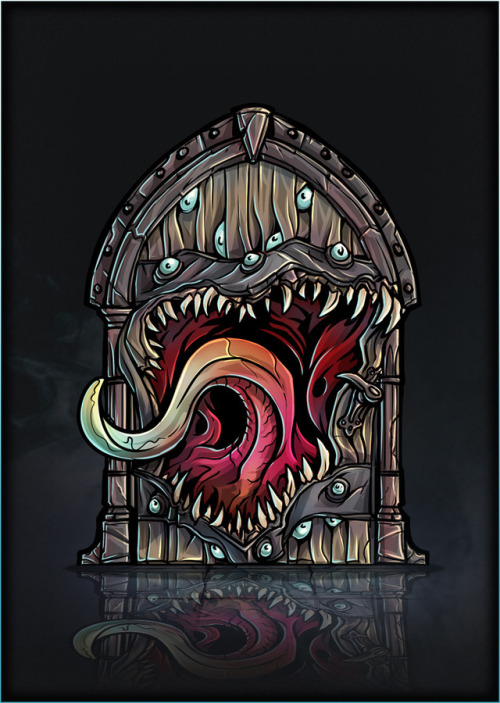
Mimics in Dungeons and Dragons can be very entertaining encounters
Meeting mimics in the dungeon does not necessarily have to end in a death. These creatures are often more than willing to negotiate with dungeon delvers. They know things. And they need food. They care little for treasure. And they are not inherently evil. This could easily lead to a trade or partnership between the mimic and the adventurers. And this is what role play encounters are all about.
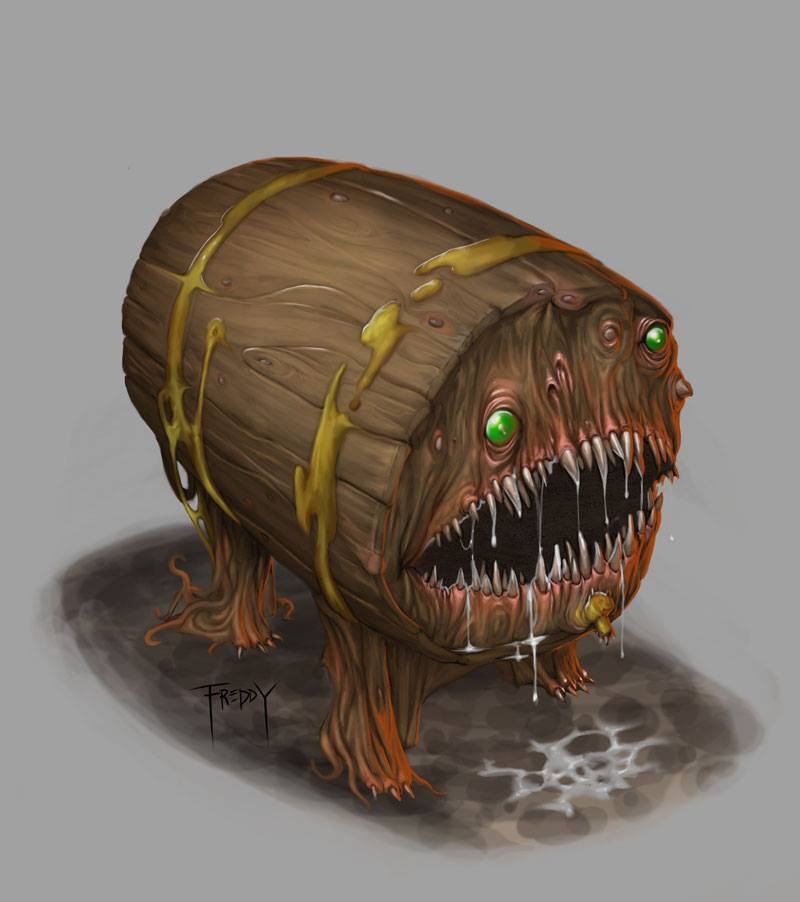
If you enjoyed this article then you might enjoy these:



